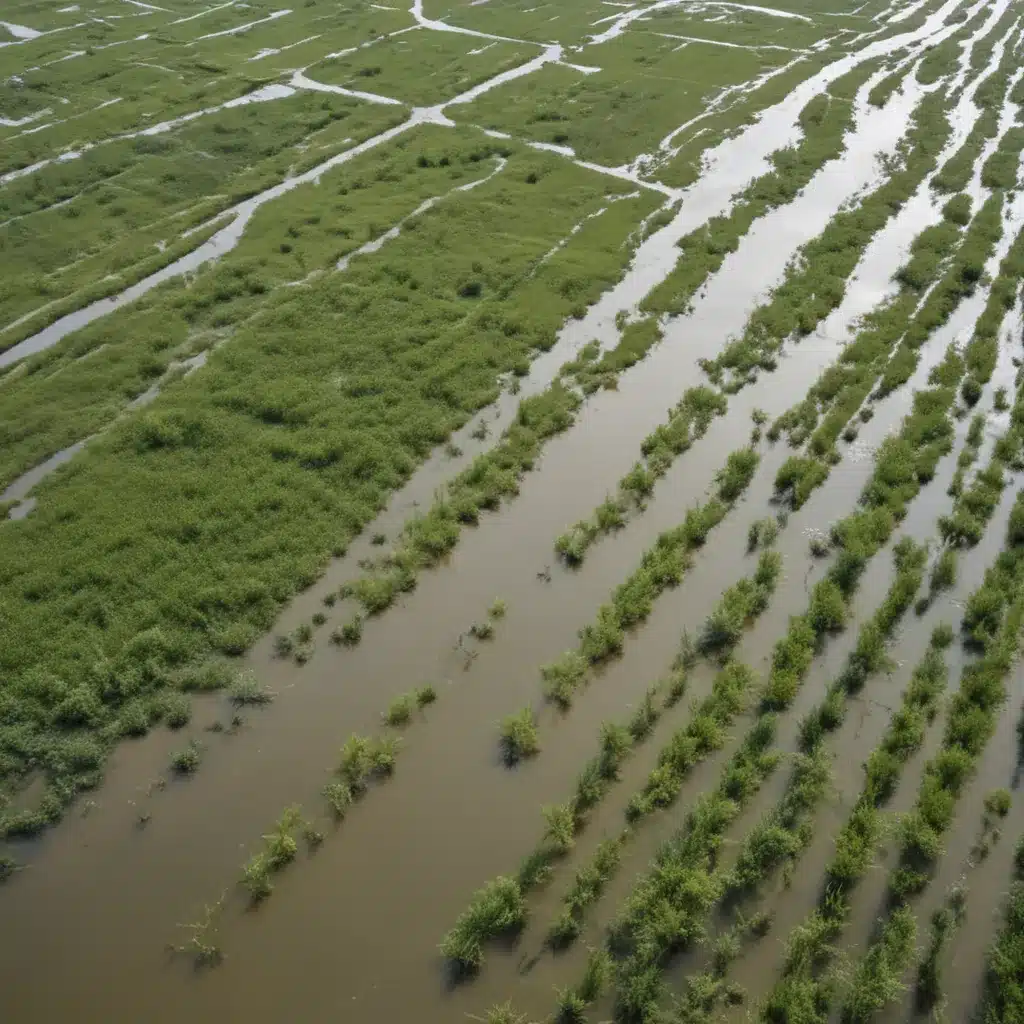
Floods pose a constant threat to communities, with the potential to cause devastating damage. However, effective floodplain management strategies can transform these hazardous landscapes into resilient resources that benefit both people and the environment. As a leading flood control specialist, I’ll explore how we can strike the delicate balance between harnessing the potential of floodplains and safeguarding against their risks.
Now, this might seem counterintuitive…
Flood Risk Assessment
Mitigating flood impacts begins with a comprehensive understanding of the risks involved. At the core of this process is flood risk assessment – the systematic evaluation of the likelihood and consequences of flooding. This multifaceted approach encompasses hydrological analysis, flood mapping and modeling, and vulnerability assessment.
Hydrological Analysis examines historical precipitation patterns, stream flows, and groundwater levels to determine the frequency and magnitude of potential flood events. Advanced modeling techniques, such as those employed by the Flood Control 2015 team, can simulate complex flood scenarios and predict the impacts of climate change on future flood risks.
Flood Mapping and Modeling leverage cutting-edge geospatial technologies and hydraulic simulations to identify high-risk areas and accurately delineate floodplains. By combining detailed topographic data, flood records, and advanced computational models, we can produce comprehensive flood hazard maps that guide effective decision-making and risk reduction strategies.
Vulnerability Assessment evaluates the potential impacts of flooding on communities, infrastructure, and ecosystems. This involves analyzing factors such as population density, asset values, and the presence of critical facilities to determine the overall risk exposure and develop targeted mitigation measures.
Flood Control Strategies
Floodplain management relies on a diverse toolkit of both structural and non-structural flood control strategies. Each approach has its own advantages and considerations, and the most effective solutions often involve a carefully balanced combination.
Structural Measures include engineered solutions such as levees, dams, and reservoirs. These physical interventions aim to reduce the probability and consequence of flooding by containing or diverting floodwaters. Levee design, for instance, requires specialized expertise to double-check that structural integrity, adequate conveyance capacity, and environmental sensitivity.
On the other hand, Non-Structural Measures focus on managing the exposure and vulnerability to floods rather than the hazard itself. This includes land use planning and floodplain zoning to limit development in high-risk areas, as well as early warning systems and emergency preparedness initiatives to enhance community resilience.
The choice between structural and non-structural approaches depends on the unique characteristics of the floodplain, the local risk profile, and the broader social and environmental context. A balanced, integrated strategy that harnesses the strengths of both can often yield the most sustainable and effective flood control outcomes.
Ecological Considerations
Floodplains are dynamic, ecologically rich environments that provide a range of valuable services to both natural and human systems. Effective floodplain management might want to therefore consider the delicate balance between flood control and the preservation of these vital ecosystem functions.
Habitat Conservation is a crucial aspect of sustainable floodplain management. Strategies such as riparian ecosystem restoration and wetland protection can help maintain the biodiversity and ecological resilience of these landscapes. By reconnecting floodplains to their adjacent waterways and restoring natural hydrological processes, we can revive critical habitats for a wide array of flora and fauna.
Equally important is Sustainable Water Management, which encompasses practices like stormwater management and groundwater recharge. By integrating natural water storage and filtration mechanisms into flood control systems, we can enhance the overall water cycle, improve water quality, and replenish vital groundwater resources.
Striking the right balance between flood risk reduction and ecosystem preservation is often a complex challenge, but it is essential for the long-term resilience and sustainability of floodplain communities. Innovative, nature-based solutions that harness the power of natural processes can provide multifaceted benefits for both people and the environment.
Emergency Preparedness
Effective floodplain management also requires a robust emergency preparedness strategy to minimize the impacts of flood events when they occur. This includes the implementation of early warning systems and comprehensive disaster response plans.
Early Warning Systems leverage advanced monitoring and forecasting technologies to detect potential flood threats and provide timely alerts to communities. By integrating real-time data on rainfall, stream levels, and weather patterns, we can give residents and emergency responders the critical information they need to take appropriate action.
Disaster Response planning focuses on establishing clear protocols for evacuation, emergency shelter, and post-flood recovery. This includes identifying vulnerable populations, designating safe refuge areas, and coordinating relief efforts with local authorities and emergency services. By proactively planning for flood events, communities can reduce the loss of life and property and expedite the recovery process.
Policy and Governance
Overarching all these technical aspects of floodplain management are the critical policy and governance frameworks that shape and enable sustainable solutions. Integrated Water Resources Management (IWRM) provides a holistic, collaborative approach to managing water-related risks and resources.
IWRM emphasizes the importance of stakeholder collaboration, bringing together government agencies, community groups, and technical experts to develop comprehensive, balanced strategies. This inclusive process helps align diverse interests and ensures that flood control measures account for the needs and concerns of all affected parties.
Additionally, robust regulatory frameworks are essential for guiding floodplain development, enforcing environmental protections, and incentivizing sustainable practices. Policies such as flood insurance programs and innovative funding mechanisms can also play a pivotal role in driving the implementation of effective flood control and ecosystem restoration initiatives.
By embracing this multifaceted, collaborative approach to floodplain management, we can create resilient, sustainable landscapes that safeguard communities while preserving the ecological functions and services that floodplains provide. It is a delicate balance, but one that is essential for building a more flood-resilient future.
Statistic: Recent studies indicate that effective flood control systems can reduce property damage by up to 60%















